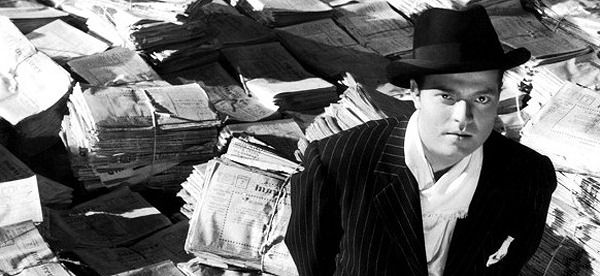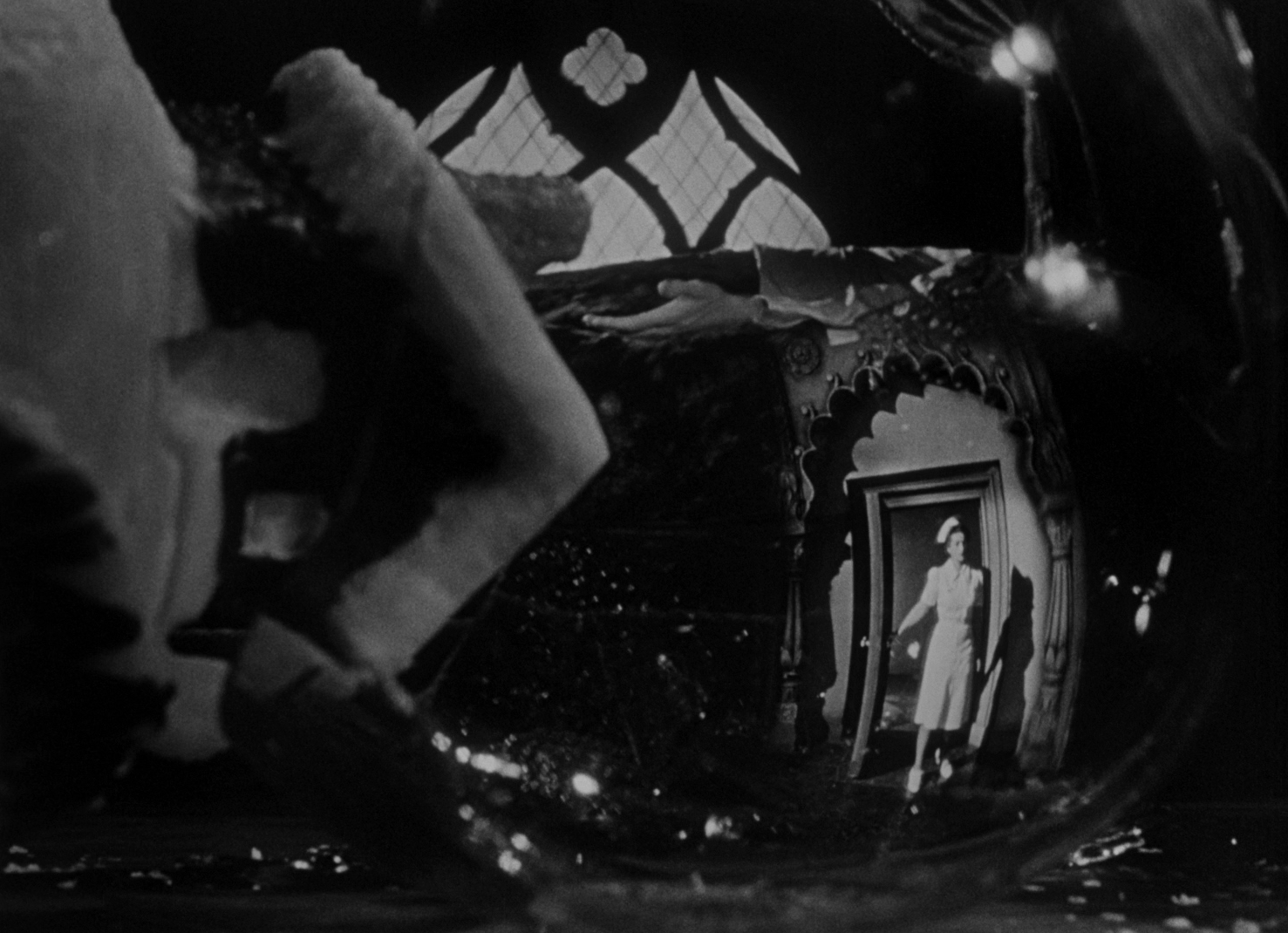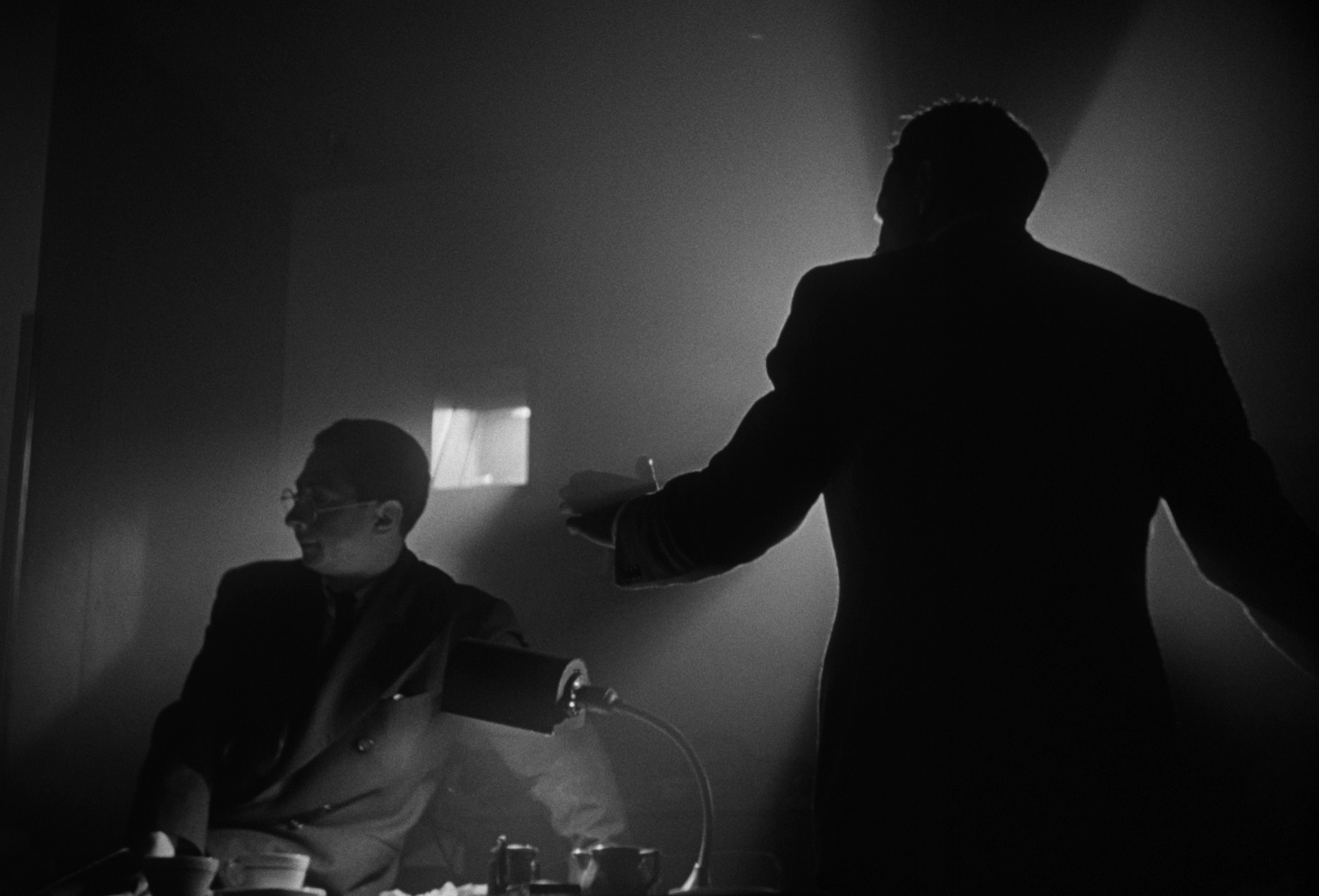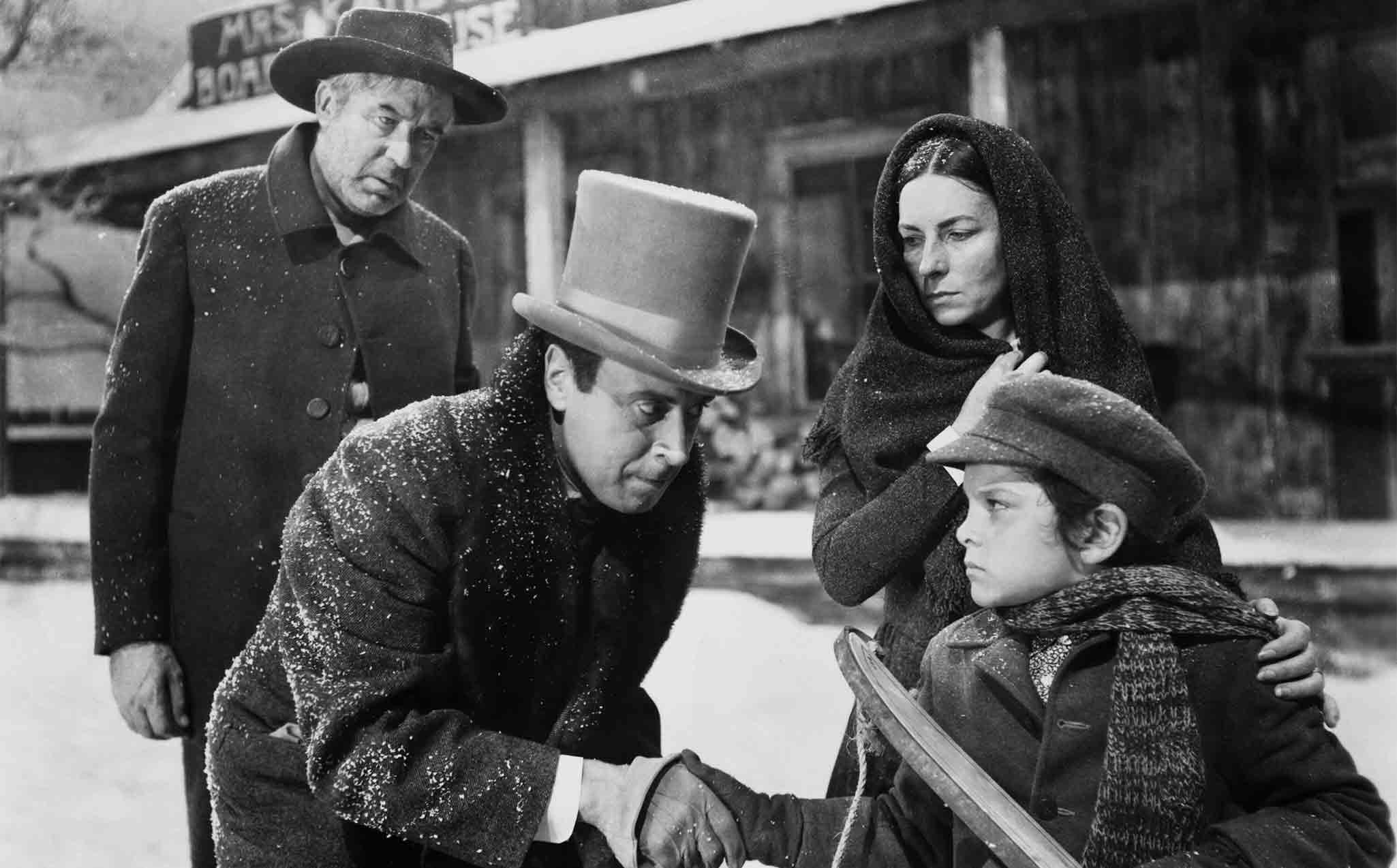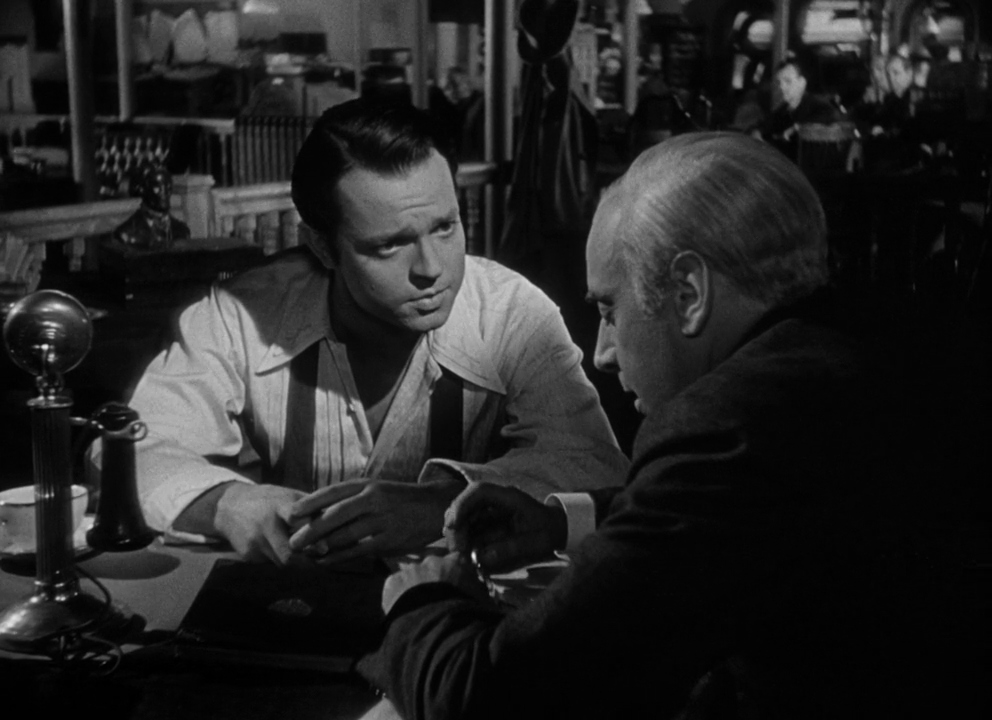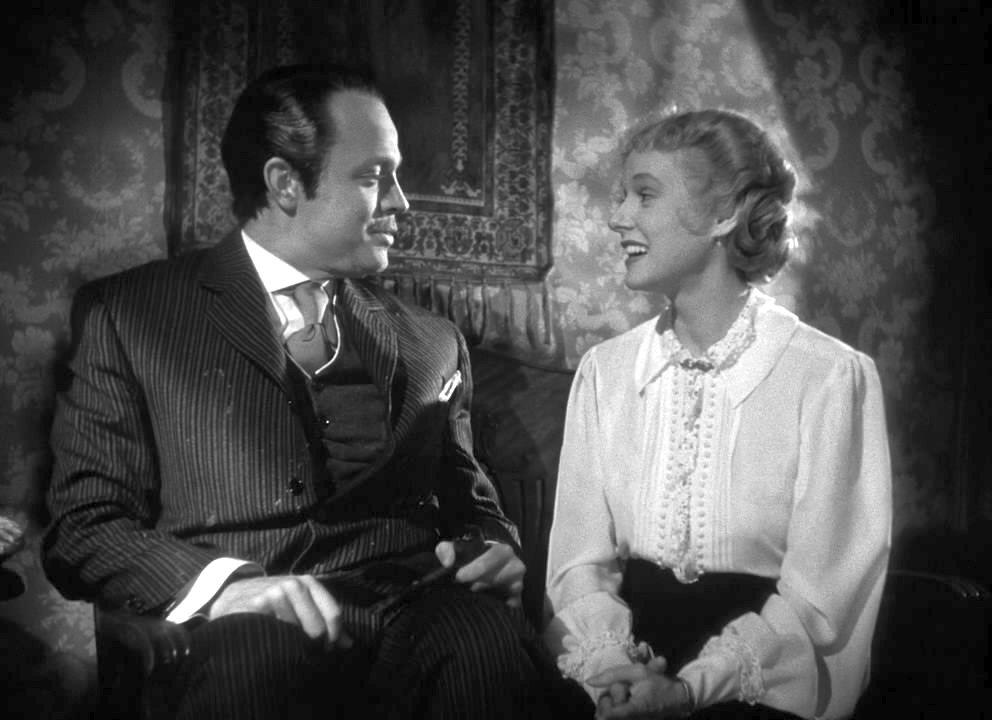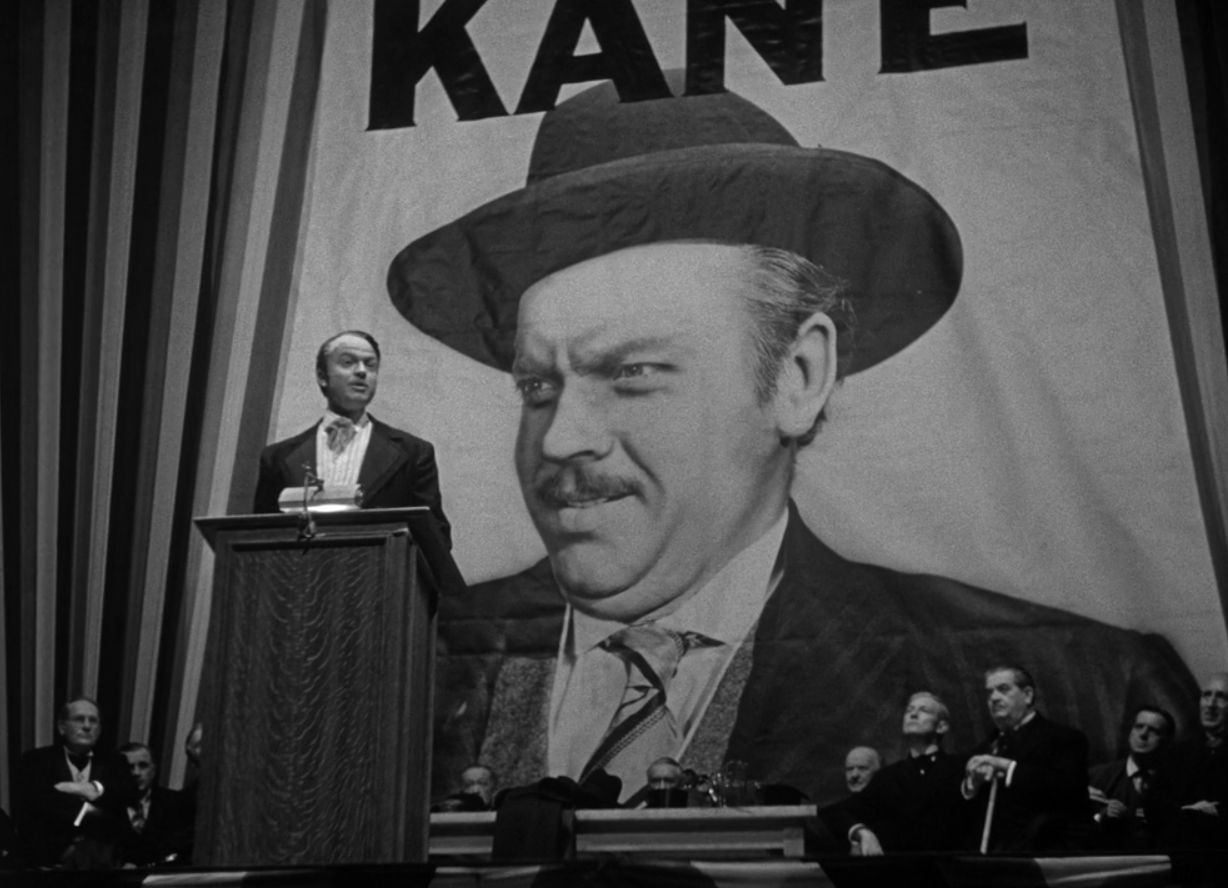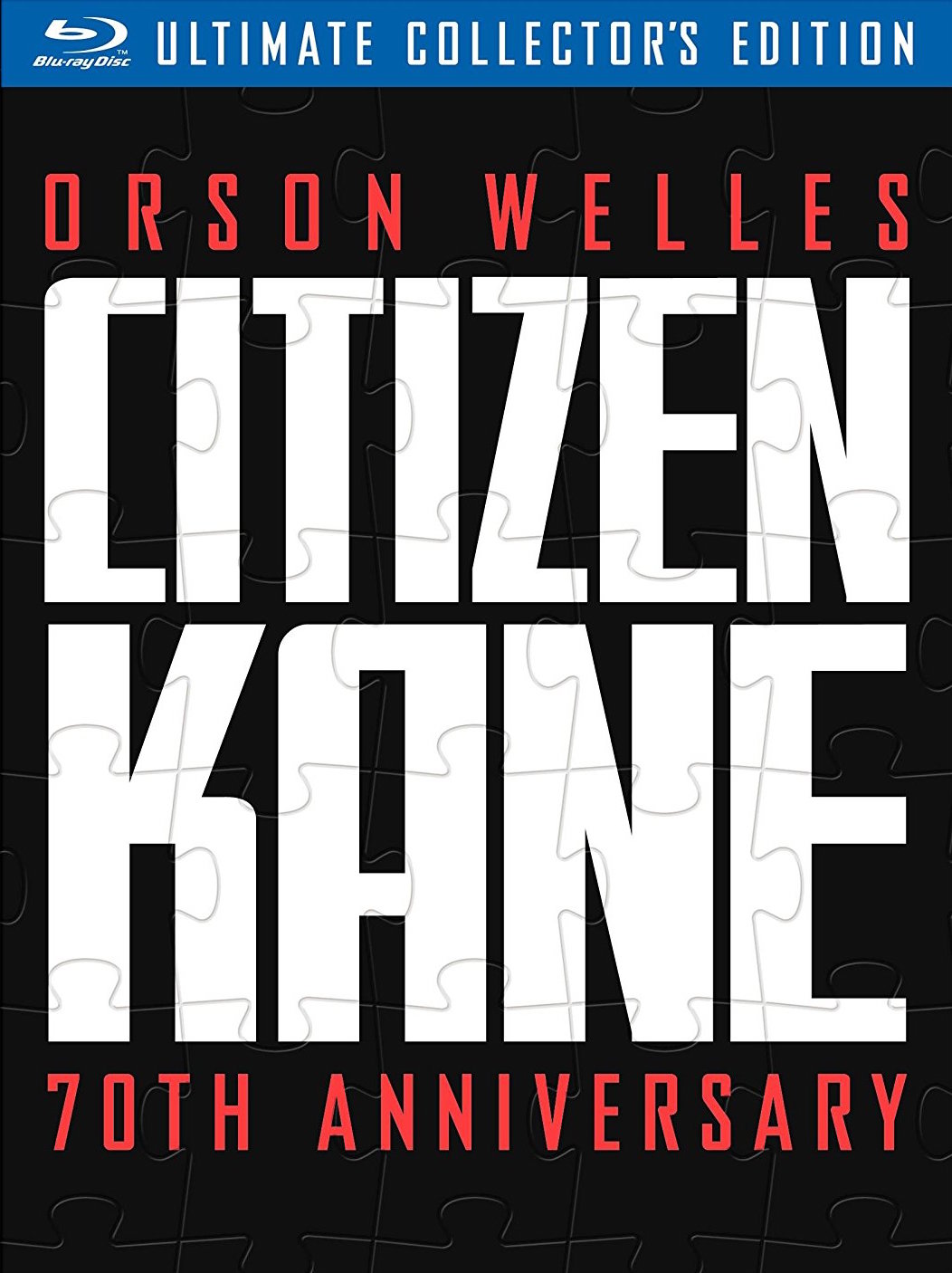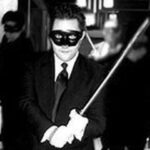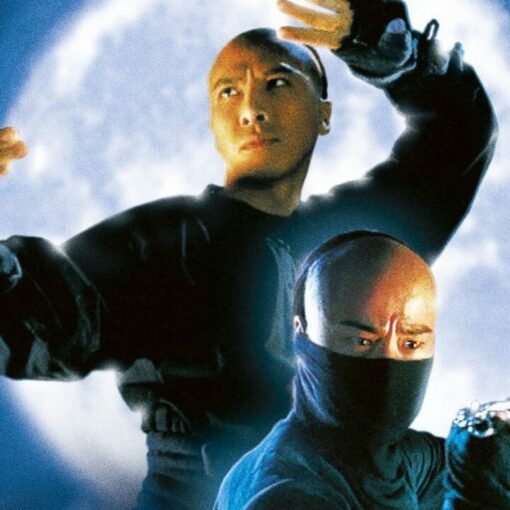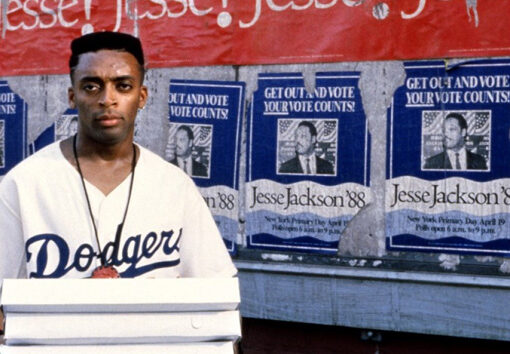INTRODUCTION
Born in Kenosha, Wisconsin in 1915, Orson Welles was a childhood prodigy who had dazzled those who knew him with such things as Shakespeare puppet shows, paintings and poetry. He had even taken solo trips to far off lands when he was at the age most kids would be playing in the sandbox.
At age 22, while on a trip to Ireland, Welles bluffed his way into an acting career and made his stage debut at The Gate Theater. After some more traveling abroad Welles returned to the U.S. and entered the theater scene in New York where he garnered notice for his productions of Voodoo MacBeth featuring an Afro-American cast and a stunning Nuremberg themed take on Julius Caesar. To earn some extra money, Welles moved into the world of radio where he would go on to lead The Mercury Theater group made up of the very people he would later cast in his first feature film Citizen Kane. His live production of War of The Worlds in 1938 made him a household name. The famous broadcast was so realistic that many people who were listening at home thought aliens were actually invading the Earth and it caused a public panic.
After the attention Welles received from the fake alien attack, RKO Studios offered him a dream project. They brought a 25 year old Welles from New York to Hollywood to make a movie called Citizen Kane (it was previously titled “The American”) the only catch was he had no prior experience in film. Along with his new friend/collaborator/mentor Gregg Toland, the cinematographer chosen for the project, Welles ventured into uncharted territory, the sole reason being he wanted to do things that hadn’t been done before. So the two essentially created a brand new cinematic language by using the various tools that were available to them and inventing others. Today, many people wouldn’t regard Kane as a “special effects film” because of its realistic story, but it was. It shares the same type of visual trickery that a film like Star Wars would be known for some 30 years later.
One of the many technical innovations that were made by Welles and Toland was something called “deep focus” which was a special camera lense that would give everything in the frame the same clarity. Many of the shots in this film are so visually brilliant because of the objects we can view close up and far away at the same time. Welles and Toland also used genius bits of editing to expand the film’s structure. Two examples: the sequence that has Kane’s guardian, Mr Thatcher wish a young Charles a Merry Christmas, Charles sarcastically returns to the greeting and immediately after Welles cuts to 20 years later and we see an older Mr. Thatcher who then says:…and a Happy New Year!” as he dictates a letter which will be sent to the older Kane. Another prime trick shot is the scene at the opera show where the camera appears to track upward in one long take to the rafters where two stage workers stand high up in the rafters. This was done by using the “wiping” edit technique in which the background is spliced in making it seem as if the camera continuously flows.
What Welles does with this relatively simple story about one man’s controversial life is use all the elements of film to weave in and out of the present and the past. He and Gregg Toland along with his editor Robert Wise (who went on to be a reknown director himself) opened so many doors that would change the way movies were made from then on. Nothing in this film is really typical of the time. It’s almost as if Welles had never seen a film before and just started from scratch evolving the medium in the process. From the clever use of stock footage to matte paintings to animation, Kane has it all in one glorious package.
An interesting detail about the production of Kane that certainly had a major effect on its magnificent, groundbreaking results was the fact Welles was given full control of every aspect of the picture. Sets were closed, rushes were kept secret, his plans were all but unknown to the producers and studio bosses. Sadly, it would be the last time he would ever be able to have full reign of a project which enabled him to bring his fantastic visions become reality on film. The studios would also never let another director have that type of carte blanche again…
FILM REVIEW
As the film opens we see a NO TRESPASSING sign on a large gate. We are entering the mythic property known as “Xanadu,” which was built on “the deserts of the Florida coast” (of course there’s no deserts there in reality). The film features several dissolves showing the abandoned, empty grounds. As we move closer and closer, we see a single light on in the huge castle in the distance. Suddenly the light goes out and we dissolve from the outside of the large bedroom window to the inside (a brilliant bit of trick editing). “Rosebud” is the first word spoken in the film and the last word of newspaper tycoon Charles Foster Kane (Orson Welles) who expires, dropping a small snowglobe which breaks after tumbling down some stairs. This sets off the blaring introduction sequence to the legend of Kane provided by the “News on The March” presentation which was based on March of Time, an actual newsreel shown in theaters at the time the film was made.
As the footage plays we get an overview of Kane’s colorful life, how he was born to a poor boarding house keeper (Agnes Moorehead) who after coming into a large fortune (The Colorado Load) sent Charles away to be the ward of Mr. Walter Parks Thatcher (George Coulouris) “grand man of Wall Street”. After a rocky adolescence Kane grows up to run a popular newspaper, “The National Enquirer” and becomes a highly successful press magnate. It’s now known that Kane was based on William Randolph Hearst, the press tycoon but Welles often denied the connection. It’s certainly very obvious from many details in the story that it is in fact based on him. The screenplay of Kane co-writte in large part by Herman J. Mankiewicz who had first hand knowledge of Hearst, since he was often invited to San Simeon because of his friendship with Hollywood screenwriter Charles Lederer, who was Hearst’s mistress Marion Davies’ nephew. While Hearst certainly was one of the main inspirations, Kane really is an amalgam of a few different people including Welles himself.
The grand operatic tale of Kane is shown through flashbacks as the different people who knew him recall his tumultuous career in the public eye. They are interviewed by a news reporter, Mr. Thompson (William Alland) who is given the assignment to find out more about the late figure to solve the mystery of the word “Rosebud” and what it really means.
The supporting cast were especially wonderful in their roles that has many of them growing from young to old. Joseph Cotten plays Jedidiah Leland, Kane’s longtime friend and right hand man who joins him in his venture into the news business. Kane’s faithful general manager is Mr. Bernstein (Everett Sloane) probably the only person that really believed Kane to be a genuinely great person. Ruth Warrick plays Kane’s first wife who dies in a tragic auto accident with their only child. Dorothy Comingore is Susan Alexander, Kane’s young mistress who he later marries and tries to turn into an opera singer with only negative results.
In the center of it all is Orson Welles, someone who was a natural adventurer and popular raconteur. His own sense of humor and bright personality gave Kane an immediate charm and likeability. We see him go from young upstart with a dream of running a daily to a bitter old millionaire who lives life on his own terms and doesn’t give an inch to anyone who defies his wishes. It’s an amazing performance.
Kane’s life is a mighty whirlwind of glamour, scandal and tragedy. One of the most revealing lines of dialogue come from Kane himself: “If I hadn’t been very rich I might have been a really great man”. As he buys more and more “things” his soul seems to sour. Kane is what we would now call a hoarder, but on a multi-million dollar scale. He surrounds himself with hundreds of statues, toys and extravagance, looking for something he lost one snowy day which, he sadly never finds again.
FURIOUS FILM GEEK TRIVIA
– Kane’s expansive property “Xanadu” was based on William Randolph Hearst’s San Simeon.
– the booming voiced narrator of News on the March is none other than William Alland who also plays the meek reporter Mr. Thompson.
The scene where Kane destroys Susan’s room after she’s left him was done on the first take. Director/star Orson Welles’ hands were bleeding, and he is quoted as saying, “I really felt it.”
– The reporter interviewing an aged Kane in the newsreel is the film’s cinematographer Gregg Toland.
– Orson Welles chipped his anklebone halfway through production and had to direct for 2 weeks from a wheelchair. When he was called upon to stand up onscreen, he wore metal braces. The injury occurred in the scene where Kane chases Gettys down the stairs and Welles tripped.
– When everyone goes on a picnic in tents in the Florida Everglades, the background is a rear projection of an RKO prehistoric monster movie, possibly The Son of Kong.
– Alan Ladd makes his appearance as one of the reporters at the end of the film (the one “with the pipe,” as indicated in the credits list), discussing Kane and “Rosebud” just before the furnace finale.
– One line by Kane, “Don’t believe everything you hear on the radio,” might be construed as a sly wink from Orson Welles to those who panicked upon hearing his radio broadcast of “War of the Worlds.”
– For the opening shot of the “El Rancho” sequence where the camera appears to move through a gap in the neon sign, a collapsible sign had to be built that could be split in two to allow the camera to pass through.
BLU RAY REVIEW
Includes: 20 page 1941 Souvenir Program Reproduction/10 Reproduction of Studio Memos and Correspondence/48 page book with photos, storyboards and behind the scenes info/5 one sheet /Lobby Card reproductions
Picture: Presented in (1:33:1) Full Frame. Restored from the Original Nitrate Elements in 4K Resolution and Remastered to 1080p High Definition. Simply put, this is the best the film has ever looked. The clarity and dark contrasts are extremely deep and rich.
Audio: DTS 1.0 Audio. Although the sound is not multi-channel it is clear and bright. The highlight is of course Bernard Herrmann’s fabulous score. This was also the legendary composer’s first work in film.
Subtitles: English SDH, French and Spanish (feature film).
Special Features: (may not be in Hi-Def/audio and subtitles may vary)
– 2 Audio Commentaries with 1) Roger Ebert: For those who want to learn more about the finer details of the different shots and SFX in the movie, this commentary is superb. 2) Peter Bogdanovich
– Interviews with Ruth Warrick and Robert Wise: The film’s co-star shares some personal thoughts about working on Citizen Kane and the time she spent acting with Orson Welles during production. Robert Wise gives a brief backstory about how he got the job as editor.
– Premiere Newsreel
– Still Galleries
DISC TWO: The Battle Over Citizen Kane Documentary: A 1996 documentary about the battle between newspaper tycoon William Randolph Hearst and actor/writer/director Orson Welles over Citizen Kane. The documentary originally aired as an episode of the Public Broadcast System’s The American Experience series and was narrated by actor Paul Winfield. 113 Min. Directed by Michael Epstein and Thomas Lennon.
DISC THREE: RKO 281 (1999) – Feature Film: Liev Schreiber plays the young Orson Welles in this drama based on the true story of what the genius filmmaker had to go through to get Citizen Kane made. Co-starring Melanie Griffith, James Cromwell, John Malkovitch and Roy Scheider. Directed by Benjamin Ross.
FINAL WORD: For film enthusiasts who love classic cinema, this 3 Disc ultimate collector’s edition will be a perfect addition to your high-def video library. Like a fine wine, Citizen Kane only gets better with age and is always a great film to rewatch and get lost in. Orson Welles made a timeless masterpiece (the #1 film on AFI’s Top 100) that will attract fans for years to come and also inspire filmmakers with its technical brilliance.

